2-AMINO-2-NORBORNANECARBOXYLIC ACID
Synonym(s):2-Aminobicyclo[2.2.1]heptane-2-carboxylic acid;BCH
- CAS NO.:20448-79-7
- Empirical Formula: C8H13NO2
- Molecular Weight: 155.19
- MDL number: MFCD00167580
- SAFETY DATA SHEET (SDS)
- Update Date: 2024-11-19 15:53:33
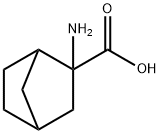
What is 2-AMINO-2-NORBORNANECARBOXYLIC ACID?
The Uses of 2-AMINO-2-NORBORNANECARBOXYLIC ACID
2-Amino-2-norbornanecarboxylic Acid functions in the suppressive effect of I-type amino acid transporter 1 inhibition as therapeutic target on human esophageal squamous cell carcinoma. Also use in the design and preparation of KMH-233, selective and slowly reversible inhibitor of L-type amino acid transporter 1 (LAT1) which potentiates antiproliferative drug efficacy in cancer cells
What are the applications of Application
2-Amino-2-norbornanecarboxylic acid is An inhibitor of amino acid transport across cell membranes
Definition
ChEBI: 2-Amino-2-norbornanecarboxylic acid is a monoterpenoid.
General Description
2-Amino-2-norbornanecarboxylic acid is a potential large amino acid transporters inhibitor. It may suppress tumor progression and apoptosis.
Biochem/physiol Actions
2-Amino-2-norbornanecarboxylic acid (BCH) is a Na(+)-independent system L specific substrate used with other system specific substrates such as the system A specific substrate α-(methylamino) isobutyric acid and system N specific substrate L-glutamic acid gamma-monohydroxamate to help identify, differentiate and characterize amino acid transport systems in cells.
storage
Store at RT
Properties of 2-AMINO-2-NORBORNANECARBOXYLIC ACID
| Melting point: | >300 °C(lit.) |
| Boiling point: | 295.5±23.0 °C(Predicted) |
| Density | 1.256±0.06 g/cm3(Predicted) |
| storage temp. | Keep in dark place,Sealed in dry,Room Temperature |
| solubility | Aqueous Acid (Slightly) |
| form | Solid |
| pka | 2.58±0.20(Predicted) |
| color | White |
| Water Solubility | Soluble to 100 mM in water |
| CAS DataBase Reference | 20448-79-7(CAS DataBase Reference) |
Safety information for 2-AMINO-2-NORBORNANECARBOXYLIC ACID
| Signal word | Warning |
| Pictogram(s) |
 Exclamation Mark Irritant GHS07 |
| GHS Hazard Statements |
H302:Acute toxicity,oral H315:Skin corrosion/irritation H319:Serious eye damage/eye irritation H335:Specific target organ toxicity, single exposure;Respiratory tract irritation |
| Precautionary Statement Codes |
P261:Avoid breathing dust/fume/gas/mist/vapours/spray. P280:Wear protective gloves/protective clothing/eye protection/face protection. P301+P312:IF SWALLOWED: call a POISON CENTER or doctor/physician IF you feel unwell. P302+P352:IF ON SKIN: wash with plenty of soap and water. P305+P351+P338:IF IN EYES: Rinse cautiously with water for several minutes. Remove contact lenses, if present and easy to do. Continuerinsing. |
Computed Descriptors for 2-AMINO-2-NORBORNANECARBOXYLIC ACID
New Products
Tert-butyl bis(2-chloroethyl)carbamate 4-Methylphenylacetic acid N-Boc-D-alaninol N-BOC-D/L-ALANINOL 3-Morpholino-1-(4-nitrophenyl)-5,6-dihydropyridin- 2(1H)-one Furan-2,5-Dicarboxylic Acid Tropic acid 1,1’-CARBONYLDIIMIDAZOLE DIETHYL AMINOMALONATE HYDROCHLORIDE R-2-BENZYLOXY PROPIONIC ACID 1,1’-CARBONYLDI (1,2-4 TRIAZOLE) N-METHYL INDAZOLE-3-CARBOXYLIC ACID (2-Hydroxyphenyl)acetonitrile 4-Bromopyrazole 5-BROMO-2CYANO PYRIDINE 5,6-Dimethoxyindanone 5-broMo-2-chloro-N-cyclopentylpyriMidin-4-aMine 2-(Cyanocyclohexyl)acetic acid 4-methoxy-3,5-dinitropyridine 2-aminopropyl benzoate hydrochloride 1-(4-(aminomethyl)benzyl)urea hydrochloride diethyl 2-(2-((tertbutoxycarbonyl)amino) ethyl)malonate tert-butyl 4- (ureidomethyl)benzylcarbamate Ethyl-2-chloro((4-methoxyphenyl)hydrazono)acetateRelated products of tetrahydrofuran

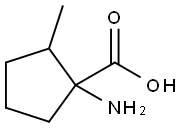

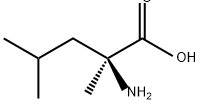
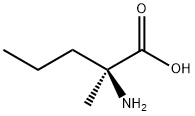
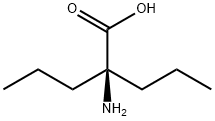
![BICYCLO[2.2.1]HEPTANE-2-CARBOXYLIC ACID](https://img.chemicalbook.in/CAS/GIF/824-62-4.gif)

You may like
-
 2-Amino-2-norbornanecarboxylic acid CAS 20448-79-7View Details
2-Amino-2-norbornanecarboxylic acid CAS 20448-79-7View Details
20448-79-7 -
 1975-50-4 98%View Details
1975-50-4 98%View Details
1975-50-4 -
 2-HYDROXY BENZYL ALCOHOL 98%View Details
2-HYDROXY BENZYL ALCOHOL 98%View Details
90-01-7 -
 2-Chloro-1,3-Bis(Dimethylamino)Trimethinium Hexafluorophosphate 221615-75-4 98%View Details
2-Chloro-1,3-Bis(Dimethylamino)Trimethinium Hexafluorophosphate 221615-75-4 98%View Details
221615-75-4 -
 61397-56-6 CIS BROMO BENZOATE 98%View Details
61397-56-6 CIS BROMO BENZOATE 98%View Details
61397-56-6 -
 14714-50-2 (2-Hydroxyphenyl)acetonitrile 98+View Details
14714-50-2 (2-Hydroxyphenyl)acetonitrile 98+View Details
14714-50-2 -
 118753-70-1 98+View Details
118753-70-1 98+View Details
118753-70-1 -
 733039-20-8 5-broMo-2-chloro-N-cyclopentylpyriMidin-4-aMine 98+View Details
733039-20-8 5-broMo-2-chloro-N-cyclopentylpyriMidin-4-aMine 98+View Details
733039-20-8